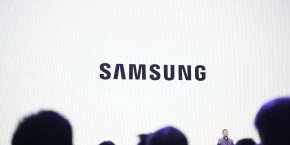
IMS Research put out a study estimating that some 420 million smartphones will be sold worldwide in the 2011 calendar year, or 28 percent of all handsets sold. The survey portrays Apple as making huge gains in the space, buoyed on the sales of 18.65 million and 20.34 million iPhones in their last two quarters – enough to garner a 19 percent share of the global smartphone market. Combined with Nokia’s slumping sales, Apple emerged as the world’s leading smartphone maker.
It remains to be seen whether Samsung, which is due to report its earnings Friday, will beat Apple’s smartphone sales (some say it will). IMS noted the fact that the company grew their share of global smartphone market from three percent in the first quarter of 2010 to 13 percent in the first quarter of this year. Samsung, as you know, sells phones powered by Google’s and Microsoft’s software in addition to their own operating system for feature phones, Bada. IMS’s Analyst Josh Builta says this of LG:
LG, despite being the third largest OEM in the world, has offered a fairly limited smartphone portfolio in recent years, a factor that resulted in the company reaching less than a three percent share of the total smartphone market in 2010.
However, Nokia’s fall surprised even the most seasoned watchers and is unheard of in this industry. Nokia, the Finnish phone giant, lost 16 percentage points of its smartphone market share, going from a 40 percent share last year to 24 percent in the first quarter of 2010. They shipped 16.74 million smartphones in the June quarter – a 34 percent annual decline – versus Apple’s 20.34 million units – a 134 percent annual increase. Nokia also killed Symbian and is only shipping the well-received but short-lived MeeGo-powered N9 to select markets. Here’s how the analyst described Nokia’s problem:
Clearly one of the key dynamics of the mobile handset competitive environment in recent years has been the inability of many traditional market leaders to recognize and adjust to the growing smartphone tier. The reasons for these failures vary and include everything from poorly designed and manufactured devices, unsatisfactory user interfaces, and portfolios that don’t offer products with a differentiating feature. These lapses have created opportunities for newer entrants to the market, which they have aggressively pursued.
Research In Motion fell from 20 percent to 15 percent in the same period, mind you. IMS sees one billion smartphones by 2016 as average selling prices drop and vendors release more inexpensive handsets. Smartphones then will account for one of every two mobile handsets sold, the research firm concludes.
Cross-posted on 9to5Mac.com
FTC: We use income earning auto affiliate links. More.


Comments